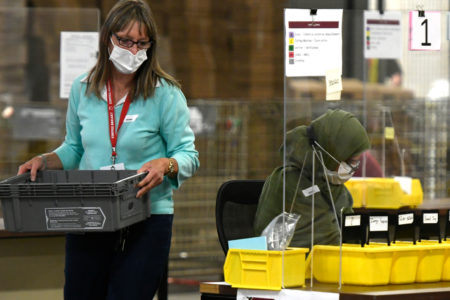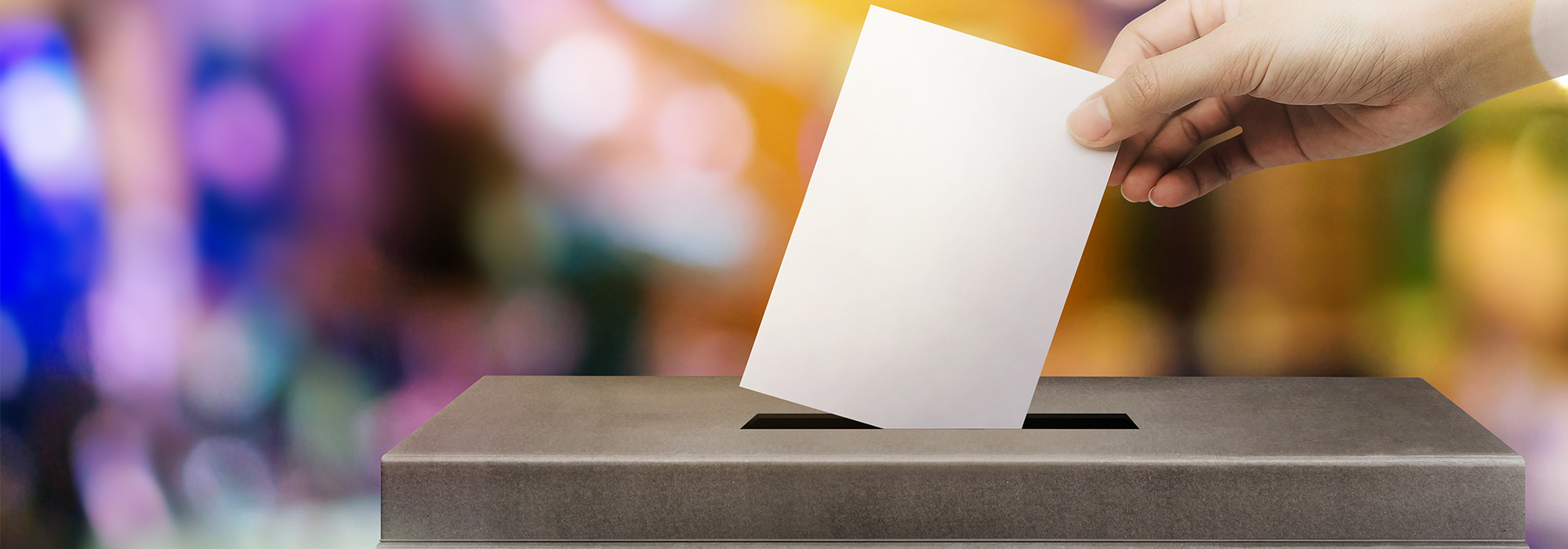
Canada’s first-past-the-post (FPTP) electoral system no longer fits the facts of our electoral scene, if it ever really did. This article therefore makes the case that fundamental change is overdue. Reflecting a reading of electoral history, it employs arguments usually made for the current system. Although the case is argued narrowly, the change it implies is dramatic.
The way FPTP translates votes into seats always produces distortions. But these distortions have generally been accepted as inevitable, and not necessarily regrettable, by-products of a system that delivers real benefits. In particular, the system usually produces stable, single-party government. It is also supposed to deliver a consolidated opposition. The combination of the two makes it possible for Canadian voters to feel that they are choosing their government directly, even when they support the losing side. Equally important, the system clarifies the lines of accountability and makes electoral punishment a real possibility.
That’s the official story. In recent elections, however, the distortion has, if anything, increased, and yet the system no longer delivers on its promise. We still have single-party government, but on the second-narrowest popular base in history (behind 1997). Even worse, because the opposition is so fragmented, we may no longer be able to call that government to account. This pathological pattern is not really new, and is unlikely to go away. The alternation of single parties in government is in fact a rare event in Canada’s electoral history and now seems a thing of the past. A modest institutional fix is unlikely to make alternation more probable; it may even have the opposite effect. Alternation thus may no longer be attainable as a constitutional ideal. We may have to settle for a more modest form of party movement into and out of government, for circulation of coalition partners, rather than their total replacement. But to attain this modest goal, complete change of the electoral system is probably required. We can no longer brush aside arguments for proportional representation (PR).
No one claims that the current system makes a perfect vote-seat translation. Seat and vote shares do not always follow the same rank order, party by party. Occasionally, the party with second largest share of votes wins more seats than the party with the most votes, and this smaller party gets a shot at forming the government. In federal elections, though, the party with the smaller vote has won an outright seat majority only once, in 1896. Most of the time, the party that wins a plurality of votes also gets to form the government, usually with a majority of seats. Among smaller parties, sectionally concentrated ones commonly outperform geographically inclusive ones. Such a syndrome is unfortunate in a country as sectionally divided as Canada, but in this article that’s a subplot about bit players.
In the main theme, the system delivers simplified alternatives and, through this simplification, direct accountability to voters. Simplification means the consolidation of seats and votes into a small number—two, ideally—of large blocs. This permits single parties to form governments that last for whole parliaments. Staying power plus undivided responsibility permits voters to assign praise or blame. If blame is the issue, its expression requires being able to throw the bums out. This the system also facilitates, by consolidating the opposition and making one party plausible as an alternative government.
At the same time, by the logic of the preceding paragraph, any out-party that wants to govern must grow. To be politically efficient, growth must take place through geographic inclusion. This is as true for a big, second-place party as for a small insurgent. A sectionally concentrated party that has already achieved a breakthrough to Parliament gains little by accumulating more votes where it already has plenty. Its future lies in invading the turf of bigger, broader parties.
The benefits of the system come in two stages. First is the brute mechanical logic of “winner takes all”: However fractionalized the popular vote, smaller parties—even sectionally concentrated ones—tend to receive a smaller than proportionate share of seats. Above some threshold, in contrast, bigger parties receive a more than proportional share of seats. This alone helps mightily in the task of simplification.
The second stage requires that voters and parties act strategically, such that the popular vote itself becomes more consolidated. Voters who might strictly prefer a small party decide that a vote for such a party is wasted. Parties that stagnate decline to offer candidates everywhere, initiating a downward spiral. Potential financial supporters redirect resources to the more acceptable alternative among the relatively strong parties. In time, Parliament should be dominated by two parties, and these should correspond with only modest slippage to only two electoral followings.
Once upon a time, the Canadian system did work like this. But we spent most of the 20th century watching the system break down and now in the 21st century, the system delivers on no more than half its promise. It still produces single-party majority governments, but it no longer delivers a credible single-party opposition. We are permitted only to reward Liberal governments or to chastise them mildly; we can no longer dismiss them. There is little to no reason to believe that this is a temporary impasse. We now must recognise that electoral competition has been pathologically skewed since at least 1921, probably since 1896.
Figure 1 captures the essence of the problem. It plots an index called the “Effective Number of Parties.” The intuition behind the index is commonsensical. Imagine perfect two-party competition: two parties of equal size. Now imagine a couple of situations involving a third party. In one, three parties divide the vote equally. Clearly this is a true three-party situation, just as much as the starting point was true two-party competition. Of course, the three equally sized parties must be smaller then the two initial competitors. Now imagine instead that the third party is much smaller than the other two. We would not want to dignify it with status akin to the bigger parties, so we commonly resort to terminology like “two-and-a-half” parties. The index just formalizes this intuition and gives it a continuous rendering. The figure refers to “parties in the electorate,” and describes the fragmentation of the popular vote.
In the background of Figure 1 is a bar graph with the effective number of parties election-byelection, with years between elections filled in. This reveals discontinuities and gives some sense of the duration of patterns. Superimposed on this background is a smoothed tracking, which brings out the magnitude of historical shifts with special clarity. The essence of the graphic is that over the last century the system added, effectively, two parties.
Between 1920 and 1940, roughly speaking, it expanded from two parties to three. Of course, more than two actual parties appeared in this period—the Progressives in 1921, the CCF and Social Credit in 1935, and various microscopic groupings along the way. But the smallness of these parties leads us to discount their effective size. Also discounted from 1935 on was the system’s second party, the Conservatives. No other party rivalled them as the Official Opposition, but much of the time they were scarcely credible as an alternative party of government. The system continued to feature the effective equivalent of three parties right down to the eve of the 1993 election. The shape of fragmentation changed around 1960, as the Liberals emerged from the “Diefenbaker interlude” permanently weakened and the Conservatives, modestly strengthened (more on this below). Western Social Credit morphed into the Quebec-based Créditistes, who eventually disappeared. The CCF became the NDP, which by 1984 occupied almost all the third-party space. In 1993, the system added, in effect, a fourth party. Again, more than one new entity appeared. The ones that count are the Bloc Québécois and Reform/Alliance, each of which grew at the expense of all the older parties, even the Liberals.
Could it be that the system still exerts powerful pressure for consolidation, countering any subterranean pressure for fragmentation? Figure 2 considers this possibility, by taking the effective-number data from Figure 1 and superimposing indicators for “shocks” to the system. By “shock” is meant an election that clearly produced a sudden fractionalization of the vote, relative to preceding elections. Five elections fit this description. In 1896, a flurry of third-party activity stood as midwife to the transfer of power from the Tories to the Liberals. In 1921, the old system broke down, with the Progressive insurgency. The shape of its successor was not immediately clear but became so in 1935. The next shock came in 1962, with the first NDP outing and the surprise breakthrough of Social Credit (later the Ralliement Créditiste) in Quebec. Then there is 1993.
It is true that after each shock the system reconsolidated somewhat. But in no period did the system revert to the number of parties in the preceding period; the effective number always grew. And the trend of reconsolidation flattened as the century passed. The 1896 bubble burst one election later, in 1900. Most of the 1921 insurgency also dissipated in the next election, in 1925. But the 1935 fractionalization largely stood until near the end of the 1935-62 period. Much the same was also true for 1962-93. From 1921 on, each reconsolidation took the same form: the Conservatives would gather up the forces of discontent and sweep to victory, only to usher in further breakdown. This pattern of Tory surge and decline bears closer examination, as it anticipated—and ultimately produced—the 1993 cataclysm.
Figures 1 and 2 mask the fact that some parts of the system were falling apart more dramatically than others. Figure 3 underlines this asymmetry by plotting vote shares for Government and (the Official) Opposition since 1878. Of course, most of the government plot represents the Liberal share. Similarly the Opposition plot captures mainly the Tory share to 1993, thereafter the Reform/Alliance one. The figure reminds us that “Outs” occasionally outpoll “Ins.” The heart of the matter, however, is that the gap between Government and Opposition has basically widened, notwithstanding a significant break in the trend between 1962 and 1984. One key date seems to be 1935, when the Opposition share dropped to 30 per cent, with only modest later recoveries. Some post-1935 Opposition gains came in elections where Liberals won pluralities in votes but not in seats: 1957, 1962 and 1979. Some gains reflect the fact that John Diefenbaker, alone among Tory chieftains, left his party better off than he found it. The other key date is 1993, when the Opposition share dropped roughly another ten points. Where the party claiming to be the government-in-waiting used to poll just under half the vote, now it is lucky to secure one quarter. The government side, in contrast, has slid rather more gradually from just over half the vote to about a 40 per cent share.
What this implies for seats depends on the exact balance between government and opposition. The collapse of the Conservatives in 1935 and the overall fragmentation of opposition gave the governing Liberals an overwhelming position in the House of Commons. After 1962, modest weakening of the Liberals’ popular base combined with modest strengthening of the Conservatives’ base to produce an Official Opposition almost as strong in the House as in the 19th century facing a relatively weak government. In 1993, the government’s popular base weakened further but its position in the House actually strengthened. The reason, of course, is that the Official Opposition’s vote weakened even more.
Figure 2 does hint that the strategic pressure of FPTP continues and that consolidation on the opposition side is already taking place. The “effective number” of parties dropped in 2000, and the Alliance was the beneficiary. Perhaps, then, we should just let history run its course, and wait for the Alliance to creep up on the governing Liberals. In fact, this seems highly unlikely, and would be so even if the Alliance were not currently wracked by dissension.
The Alliance’s growth in 2000 defies the logic of opposition consolidation outlined above. To be efficient, growth must occur outside the insurgent party’s home turf, so that it gains seats at an even faster clip than it gains votes. As Figure 4 shows, however, Reform/Alliance grew, not by spreading geographically, but by piling up yet more votes where they were least needed. The most significant change was to make Saskatchewan about as fertile ground for the Alliance as BC had been all along. Everywhere else, the Alliance was about as weak in 2000 as Reform had been in 1993. Most of these vote gains yielded nothing in seats. The party is clearly stalled.
On the surface, the Alliance’s vote surge seems to match the Conservatives’ drop. If we delved no further, we might conclude that this is evidence of consolidation of the political Right and a fine portent for the future of alternation. The fallacy in this interpretation fairly leaps from the Figure 5, which does for the Tories what Figure 4 did for Reform/Alliance. After 1993, the Conservatives’ geography was a mirror image of that for Reform/Alliance, only flatter: The party was stronger in Atlantic Canada than anywhere further west, but not really strong anywhere. The figure records the modest Tory recovery in Atlantic Canada in 1997. Essentially none of this was lost in 2000, and only minuscule hits were taken in Ontario and the West. Most of the party’s 2000 reverse came in Quebec. But none of its Quebec loss could have accrued to the Alliance. Thus Tory losses only strengthened the governing party in Quebec, even as they undercut the Tories’ strongest remaining argument to be the pole of anti-Liberal consolidation. In 1997, the party could still claim potential appeal both inside and outside Quebec. Now, only the Liberals can do so.
Underlying the geography of Figures 4 and 5 is a deep antipathy between Reform/Alliance supporters and all other players in the game. Figure 6 makes this point with evidence from the 1997 Canadian Election Study. (More recent data are not yet available, but I would be stunned if the 2000 pattern looked much different). Respondents were asked to rate each party separately on a 0-100 scale, where higher ratings indicate more positive feeling. Figure 6 separates respondents by their 1997 vote and looks only at non-Quebec respondents. Start with the easiest case, supporters of the NDP. Obviously, they rate the NDP most highly, then the Liberals, then the Conservatives and finally Reform. This is a simple left-right pattern, where the further the party is to the right, relative to the NDP, the less well-liked it is by the NDP’s own supporters. The pattern for Liberal voters embodies the same left-right logic, only now for voters not so far to the left. Liberal voters, on average, like the Conservatives slightly more than the NDP. But Liberals like both parties more than they do Reform. The left-right logic appears again among Conservative voters, this time for a group still further to the right. What’s critical, however, is that Conservatives like Reform least, and they like Reform hardly more than Liberals and New Democrats do. All other party groups see Reform as too far to an extreme.
Reformers return the compliment. One striking thing among Reform voters is that the “liking gap” between their own party and all others is much wider than for any other body of voters. Reformers rate their second-choice party almost as low as other groups rate their last-choice party (which is, of course, Reform). And the second-rated party for Reformers is … the Liberal party! The NDP comes last, but not far behind the Conservatives. So if 1997 is any guide, there is little basis for affinity on the so-called right. Conservative and Reform (and presumably, Alliance) voters like the other party of the so-called right hardly at all, and each group, along with NDP voters, prefers the Liberals to all other alternatives.
Missing from this discussion is any mention of the other fragment of the old Tory coalition, the Bloc Québécois. The Bloc seems even less available than the Conservatives or Reform for anti-Liberal coordination. Its presence narrows the ground for federalist mobilization in Quebec and represents a fundamental change in Quebec’s relationship to the overarching electoral framework. But if the ground for federalist mobilization in Quebec really has narrowed, the Liberals seem to have reoccupied almost all of it.
Clearly, the deck is stacked in favour of the Liberal Party. This is not to say that the Liberals are deeply illegitimate. Indeed the very opposite is true, and that is the essence of the problem. The Liberals perfectly exemplify the “Condorcet winner,” the alternative that would beat all others in a straight fight. As Figure 6 shows, the Liberals are the regular second choice where they are not the outright first choice. The Liberal Party may not be indispensable, but it is, in effect, irreplaceable.
This pattern is not new, just more sharply outlined than ever before. Looking back through the lens of 1993 we see that Canada has not had sustainable two-party competition since at least 1921 and probably not since 1896.
In the idealised form of bi-polar competition, two parties compete from opposite ends of a single policy dimension, differ from each other only modestly because of the logic of vote maximization on that dimension, and displace each other in government as one party gets closer to the centre of the electorate or as the centre itself moves. Instead, the Canadian pattern has featured long-lived Liberal governments—which testifies to the Liberals’ ability to straddle the middle. Liberal domination is interrupted once each generation by a Conservative victory, sometimes with stunning majorities. This victory comes as the Tories gather up all the strands of discontent accumulated over the seemingly endless years of Liberal hegemony. The result is a Conservative government that for at least one Parliament has an extraordinarily inclusive geographic base, exactly as encouraged by the strategic logic of FPTP. But the inclusiveness is deceptive. Crudely put, it is the result of an ends-against-the-middle strategy, the only one available given the Liberals’ control of the middle ground. Ends-against-the-middle can produce extraordinary advantage in the short run but yields a wildly incoherent—and unsustainable—electoral coalition.
The slow, semi-public disintegration of the Tory government in the Manitoba Schools crisis was a case in point. In 1911, the party’s return to power was based on a temporarily successful combination of pro-imperialist politicking outside Quebec and anti-imperialist advocacy inside that province. The Quebeckers were basically gone by 1917, when the party (now dominating the Unionist coalition) overreached and set itself up for the cataclysm of 1921. This basic pattern recurred episode after episode, one of the lessons of Figures 2 and 3. The long-term strengthening of the Conservative position by John Diefenbaker is the great exception. But it is the exception that proves the rule. Significantly, the Tories continued to gain in the West after Diefenbaker lost office, a strong hint that much of the Western support he bequeathed to his successors was inherently oppositionist and therefore difficult to reconcile to the discipline of power. In a sense, he set his successors up for the fall. That the fall took so long to arrive simply reflects how long it took them to displace the Liberals. On this reading, 1993 was just the final explosion, along lines of force already visible to political seismologists.
Clearly, the proportion of Canadian voters willing to play the two-party alternation game has shrunk. Or if they do want to play the game they cannot find enough common ground with other parties to engage in strategic behaviour. Of course, this does not describe all voters. NDP supporters and voters on the Liberal Party’s left flank seem willing to shuttle back and forth, pulling the Liberals left or cleaving to the Liberals to avert a threat from the right, according to circumstances. Conservative supporters also do this; at least in the sense of being prepared to abandon the Conservative ship if they sense that doing so is necessary to support the Liberals as the one remaining pan-Canadian party. What they will not do is move in appreciable numbers to the Alliance. Nor will Alliance voters go the other way, probably not even in the aftermath of the party’s current implosion. Alliance voters replicate a pattern going back to the Progressive insurgency and perfectly exemplified by the old Social Credit Party, at least in its federal variant. The Progressive movement sought to rewrite the very logic of parliamentary government. No one could support Social Credit in the belief that it was poised to govern. It embodied a completely different representative logic: regional expression for its own sake. If Reform/Alliance also embodies this logic for many of its voters, the same must also be true for supporters of the Bloc Québécois. As long as such parties and their supporters are content to remain small, then their very sectionalism is rewarded by FPTP. In this sense, FPTP, far from mandating an inclusive growth strategy, positively facilitates fragmentation. It makes voters act like PR voters.
All this makes for noisy politics and sometimes for a sense of crisis in the federation. Underneath, however, another crisis is silently brewing. In the same way that many voters have opted out of the government game, so have many others dropped out of electoral participation altogether. The scale of abstention is indicated by Figure 7, which plots three participation lines for the 1945-2000 period. The top line indicates the percentage of the voting-age population that actually gets on the voters list. The next line reports votes cast as a percentage of those on the list, the conventional measure of “turnout.” The bottom line is votes cast as a percentage of the voting-age population, to facilitate comparison with the US.
The most important fact is that turnout dropped dramatically after 1988. According to our standard turnout measure, we have lost something like 20 per cent of the 1988 electorate. Where in 1988, 75 per cent of registered voters turned out, in 2000 the percentage was 61 per cent. Perhaps the truest indicator of how bad things are is the bottom line—turnout relative to the voting-age population. In one sense this is unfair, in that not everyone of voting age is eligible, and some who are eligible are hard to reach. But this is the measure Americans use and which produces handwringing about the fact that presidential-year turnout is only about 50 per cent. By this standard, we appear to be almost as bad. In 2000, only 55 per cent of the voting-age population turned out, hardly better than the 50 per cent registered south of the line. We too should be wringing our hands.
And Figure 7 makes a strong, if circumstantial case that political competitiveness—more correctly, the lack of competitiveness—is the prime culprit. From 1945 to 1988, average turnout was 75 per cent, with no trend, so 1988 was a typical year. Then turnout dropped like a stone. A drop so fast is not likely to be the product of some extrapolitical process, whether in sociology or in technology. The arithmetic of the situation almost guarantees that the drop spanned a broad range of the electorate. The most reasonable interpretation of a sudden shift is that its source lies in events immediately surrounding it.
Ironically, the multiplication of parties in the 1990s by itself might have brought some new voters into the game (which indeed happened in Quebec with the appearance of the Bloc). More importantly, though, the appearance of these particular parties in this particular electoral system made Canadian politics less competitive—at least in terms of the two-party alternation game. The turnout pattern of earlier years reinforces this interpretation. Note that high points in earlier years tend to come when the Liberals lost ground to the Tories, sometimes as the Tories won (1957, 1958, 1962, 1979, 1984), sometimes as they just threatened the Liberal grip on power (1945 and 1972).
It may be simply that the Tories themselves, and only the Tories, drew sometime abstainers back into the electorate in those years. This seems implausible, however. A more reasonable supposition is that the potential electorate at large sensed a renewal of two-party competition and responded accordingly. Then when the Tories swiftly exhausted themselves in government, voters retired from the field in anticipation of yet more Liberal years in power.
If this story is true, then it is a further indictment of the electoral system. FPTP electorates chronically turn out at lower rates than PR ones do. Usually, this is attributed to the fact the FPTP devalues many of the votes cast, according to the competitive situation, where PR rarely does this. That the FPTP system chronically treats votes unequally has long been known. Now it appears that an electoral framework with a globally uncompetitive distribution of popular votes is yet another reason for voters to exit the process entirely.
We now arguably live in the worst of both worlds. History suggests that Canadian voters will not herd themselves back into two partisan camps, the precondition for a properly functioning FPTP system. If voters no longer accept the discipline of FPTP, we should look for alternative ways to count their votes. The main choices are a “majority” formula, as in Australia’s “alternative vote” (AV), or some form of PR. The strong suggestion of Figures 4 to 6, however, is that AV is not the answer. Indeed, AV might work even more efficiently than FPTP to ensure Liberal hegemony. The Liberals, after all, are the near universal second choice.
This leaves some form of PR. PR will not deliver simple alternation, nor will it banish regional parties. PR may well necessitate parliamentary coalition building, and some version of the Liberal party would still find its way into most coalitions. But at least the Liberals would not be the only, or even the dominant party in government. If we are unwilling to contemplate a change of such magnitude, then we are unlikely to get any change at all. Instead we should settle in for decades of Liberal rule and voter indifference.
Photo: Shutterstock









